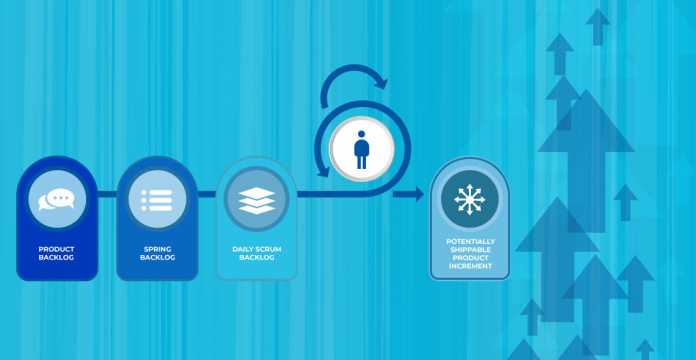
Scrum is the most commonly used Agile methodology which is widespread in enterprises globally. The word Agile defines a standard collection of concepts and principles for arranging and handling complex projects. Even though it has its origins in software development, Scrum is utilized in every field to provide nuanced, creative goods, and services that satisfy clients. It’s easy to comprehend but hard to learn. This is accompanied by the essential advantages of Scrum for companies, departments, goods, and individuals.
To take advantage of the scrum, you need to have faith in empiricism, understand more about the scrum structure by using it, and continuously audit and adjust the scrum implementation. In this blog, we’ve listed the most prominent benefits of the Scrum framework.
Benefits of Scrum Framework
Improved Customer Satisfaction
The first and most important thing is keeping pleased buyers. In Scrum, sprints are high-speed, such that samples are delivered and ready for review in 1-3 weeks. Scrum’s fundamental goal is to include the latest updates or corrections continually and gain user input as soon as possible. But Scrum speeds up bug-solving processes and makes consumers happy with new technologies.
Achieve Better Quality
There are initiatives to fulfill a mission or a target. Scrum establishes the basis for constant reviews and evaluation to achieve the best possible output. Through the following activities, Scrum helps to improve quality:
- Defining and implementing specifications promptly such that awareness of product functionality is as important as possible.
- Incorporate regular monitoring and reviews from product owners into the production process, enabling the development team to fix concerns when they are fresh
- Sprint discussions with stakeholders Daily and ongoing enhancement of scrum team performance (product or service)
- Planning to conduct sprint retrospectives, enabling the scrum team to develop procedures, resources, partnerships, and work conditions consistently
- Completion of the work by specifying what is done to resolve development, testing, integration, and documenting
Lower Production Costs
Using Scrum in construction/manufacturing will contribute to lower production costs. The quality of the goods is mainly measured by the time and money expended on new launches. Yet businesses are not in a position to quantify the actual, overall manufacturing costs.
Story-pointing can be used in Scrum to measure the difficulty of any task. The complexity is associated closely with manufacturing prices. Story referring to each lesson gives you an ability to help predict the expense of creating new functionality, which also allows project managers to organize projects based on difficulty.
Decreased Time to Market
Scrum produces a performance that is 30 to 40 percent quicker than conventional approaches to end-users. This is one of the best benefits of the Scrum framework. This time decrease is attributed to the following aspects:
- Earlier production implementation due to the assumption that the initial reporting stages of waterfall projects which generally take months are predictable by getting a committed product owner inserted in the scrum team to “just in time” increasingly outline specifications and have real-time guidance
- Requirements of greatest priority are distinguished from those with the lowest priority. Incremental value transfer to the end-user ensures that the criteria for higher value and risk will be provided before the requirements for lowest cost and risk—no reason to wait until the whole project is complete before anything is launched into the market
- It swarms software to complete each sprint. After each sprint, scrum teams deliver shippable amounts to the job product and operation
Enhanced Collaboration & Communication
One of the other major areas of gain for Scrum is the heavy emphasis on teamwork and day-to-day communication through meetings such as the Daily Standup, Retrospective Sessions, Backlog sessions, and more. Scrum offers feedback on activities to track success for each team member and to enable efficient resource distribution. Collaboration’s deep stress contributes to a happy and more effective squad.
Two of the main advantages of Agile Scrum are a rapid response to business demands and cost savings due to improved efficiency. Based on my experience, Scrum could be used not only in app development but also in Agile marketing and sales, providing similar advantages.
Reduced Risk
Scrum tends to help minimize the risk of complete failed projects — members earn a deal of time and power with no interest on investment — by providing real assets early and pressuring scrum teams to perform poorly first if they fail throughout the following practices at all:
- Having done the highest-risk items first offers the longest runway to work through problems or fail early and cheaply
- Development in sprints, guaranteeing a limited period between early investment in the project and either failing quickly or verifying that a product or method works
- Having a work product increase starting on the very first sprint, so that the most massive value and risk specifications were developed and can be delivered to customers if desired even if a meeting ends
- Develop specifications for the description done in each sprint so that project stakeholders have completed accessible characteristics, irrespective of what may happen with the task
Conclusion
While several businesses have adopted the Scrum methodology, one of the standard Agile models, other Agile methods have proved to be the right option for many enterprises. So, folks, I hope you have liked this article on the benefits of Scrum.
By pursuing popular Agile certification courses from an Accredited Training Organization, individuals and enterprise teams can learn about multiple Agile frameworks and Agile Project Management techniques to select the best methodology to meet the needs of your business.
Some of the popular Agile Certification Courses that individuals and enterprise teams can take up are:














